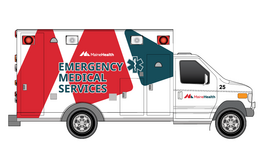Processing Your Payment
Please do not leave this page until complete. This can take a few moments.
Women to watch: Dr. Barbara Slager and Beverly Neugebauer, Coastal Women's Healthcare
Fifteen-minute office visits. Doctors as paid employees of large hospitals and health plans, their services marketed as commodities. Medical decisions challenged by non-physicians seeking to cut costs.
These examples of the “industrialization of medicine” are what spur Dr. Barbara Slager, president of Coastal Women's Healthcare in Scarborough, and Beverly Neugebauer, the practice's executive director, to strengthen their independent, doctor-owned practice when the trends are moving in the opposite direction.
“It has killed the spirit of medicine,” says Slager, a doctor for 15 years who became Coastal Women's president in 2008, a role that includes acting as corporate/medical director of the independent practice owned by eight physicians.
In the last three years, they've successfully moved the obstetrics-gynecology practice into a new location on Route 1 in Scarborough, expanded its services, completed the conversion to a fully electronic health record system and became the first independent women's health care practice to connect with Maine's Health Information Exchange, operated by HealthInfoNet.
Last spring they earned accolades from the federal government for using health information technology to improve patient care.
But you won't find their names at the top of Coastal Women's organizational chart, where typically you'd expect to see a president and executive director. Instead, flipping the conventional top-down management model, Slager and Neugebauer intentionally have put themselves at the bottom of the chart. Above them are three teams — patient access and satisfaction, quality and patient outcomes and automation — comprised of front-line medical providers and patients.
Topping the inverted pyramid are Coastal Women's patients.
The flipped management chart, they say, encourages everyone in the practice to identify, investigate and solve the problems that might keep the practice from achieving its overarching goal of providing gold standard obstetric-gynecological care to every woman who walks through the clinic's doors.
“Bev and I very much embrace a flat management style,” says Slager. “We're not burdened by titles here. We reward people who are creative and willing to put in the hard work that's necessary to meet the challenges of where health care is going.”
Promoted to executive director in June 2011 after serving three-and-a-half years as the practice's finance and information technology director, Neugebauer sees her role as being less a boss and more a coach — someone who makes sure the three leadership teams are working together effectively to solve problems identified in a rotating schedule of weekly meetings. Working in health care since 1984 and in leadership positions since 1992, Neugebauer says her current position at Coastal Women's Healthcare capitalizes on the skills she developed over 30 years of working in private specialty practices with a focus on finance.
“From the very beginning, I saw this as an exciting opportunity,” she says. “Mostly, it's because of the physicians' passion to be an independent practice. That's where my passion is. It's very important to me.”
Embracing change
Neugebauer's quiet reflection stands in contrast to Slager's more intense engagement, but it's clear they have complementary personalities and work styles. Playing off each others' strengths has allowed the practice to stave off consolidation, which has been the dominant health care trend in recent years as small hospitals and doctors' groups affiliate with large hospitals to reduce overhead costs and gain market leverage with commercial payers. Additional pressure is coming from the 2010 Affordable Care Act's reforms that seek to reduce costs, improve health care outcomes and streamline the delivery of care.
They've made it their business to identify emerging themes in the health care arena and then figure out the changes they need to keep ahead of the curve and remain viable as an independent practice.
“We try to anticipate where the puck is going and make sure we have what we need so that when it heads toward the net we're already there,” Neugebauer says, describing the practice's conversion to a fully electronic health record system.
Neugebauer credits Slager as being the “physician champion” for making that switch.
In 2008, at the start of his first term, President Obama signaled that electronic health records would be a priority by creating Medicare and Medicaid incentives for their adoption and use. At that time, only 17% of physicians and just 9% of hospitals nationwide had adopted electronic health records. Neugebauer says Slager immediately saw the medical value of having easy and immediate access to patient records — since it would ensure that doctors have the information they needed to make the best diagnoses and treatment decisions for their patients — and set that as a goal for the practice.
“I have a keen interest in using technology to improve patient care,” says Slager. “Electronic health recordkeeping allows us to spend more time with patients, so there's less time paper-shuffling. I can now look at someone's 10-year history with 10 clicks of a mouse.”
Both women point to a recent example of the benefits of that model. A patient had been seen by a practitioner who diagnosed her problem and prescribed a treatment when she noticed on the electronic chart that the patient hadn't been in for a mammogram for a couple of years. Empowered to always put the patient first, the practitioner suggested the patient get a mammogram right there before she left the center. The patient did and a tumor was discovered in a breast and later treated.
New building, new approaches
The 2010 move into the former Konica Minolta plant on Route 1 in Scarborough as the anchor tenant for a medical office building dovetailed nicely with the conversion to electronic medical recordkeeping, allowing it to be built into the doctor-patient relationship at every level. It also gave Coastal Women's doctors a chance to design their clinic so that it could provide one-stop women's health care, with on-site labs, digital mammography and ultrasound services, bone-density testing in addition to the traditional ob/gyn services.
Slager says the previous location within Maine Medical Center's Scarborough campus was bigger than the practice needed and carried a higher rent than doctors wanted. The hunt for new space underscored the financial benefits of the electronic conversion, since paper health records required a sizeable storage area and eight full-time employees “who just pulled charts and filed them.” Eliminating paper records created savings on both fronts.
“We had come to a place where we could no longer hold the line on that kind of manpower,” Slager says. “We needed to make a huge leap to an electronic platform. We knew it was necessary. Otherwise, it was going to be a financial disaster [to continue maintaining health records on paper].”
It's at this point, she says, many doctors — hoping to avoid the headaches and expense of converting to electronic recordkeeping — decide to affiliate with a larger medical group or hospital. Slager says she and her colleagues rejected that option, in large part because they feared they would lose their autonomy in deciding what's best for patients.
“We know our problems better than anyone else, why don't we solve them ourselves?” Slager says regarding the approach she and her colleagues decided to take.
That philosophy influenced the design of the new clinic in every way. Instead of one large lobby where patients of eight doctors, two nurse practitioners and one nurse midwife wait as if they were in a bus station, the clinic is divided into three wings. Each has its own waiting area and private rooms for women to see their doctor, who is part of a team assigned to that wing.
Doctors bring laptops into those rooms, where there's a movable computer desk that allows for face-to-face conversation while completing the electronic chart instead of sitting at a desktop computer in the corner with her back to the patient. Onsite mammography, ultrasound and blood labs allow women to get additional medical services at the clinic, instead of having to drive to another site.
Tapping funds the Obama administration made available to help practices transition to electronic medical recordkeeping, Coastal Women's Healthcare has been able to offset nearly a third of the cost of its initial $750,000 investment. Electronic billing led to faster collection of insurance premiums, greatly improving the practice's cash flow. The conversion of health records allowed 10 administrative staff positions to be cut.
Important as those benefits of electronic conversion might be to the practice's bottom line, Neugebauer and Slager say improved patient care is the overriding goal: And that's where the practice's team approach to management helped in achieving the “Stage 1 meaningful use” benchmark that earned it a Vanguard Award in Health Information Technology from the federal Centers for Medicare and Medicaid in May 2012.
Following the Institute for Healthcare Improvement's “Plan-Do-Study-Act” model, the practice's three management teams regularly identify problems in recordkeeping or the doctors' workflow — for example, forgetting to ask patients if they have any new medications, or failing to record their answers on the electronic chart. They develop a plan to correct the problem, test the plan, study the results and learn from them, and then determine what changes should be made to improve patient care.
The catch-phrase describing that approach is “clinical microsystems,” which Slager says means “collecting the brightest and most enthusiastic people around you and letting them do what they do best.”
Challenges still remain
After almost five years of rapid and sometimes stressful change — which included reducing the staff by one third — Neugebauer says the practice now faces different challenges.
Keeping pace with technology advancements in the practice's diagnostic services, maintaining doctors' privileges with major hospitals and health insurance networks and continuing to manage costs without sacrificing quality of patient care are just a few, she says.
Neugebauer says Coastal Women's will continue to work closely with HealthInfoNet — which helped the practice connect to the state's health information exchange — in order to achieve Stage 2 of the federal government's meaningful use guidelines. The practice also is undertaking a top-to-bottom safety and protocol analysis, a six-to-12-month process she says is driven in part by quality standards that will be used to measure and compare the performance of health care providers throughout Maine.
“Without the team structure, it would be extremely difficult to meet these challenges,” she says. “It's almost as if this is the beginning of my career. I'm using the things I've learned in the last 20 years, but now it's with a focus and a purpose.”
Read more


















Comments